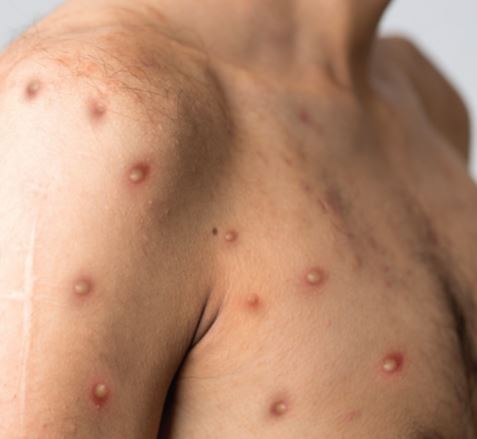On Aug. 19, California Department of Public Health director and State Public Health Officer Dr. Tomas Aragon hosted a teleconference providing an update on the state’s efforts to the monkeypox (MPX) outbreak in California. The conversation surrounded new isolation and transmission guidance from the state, and how the state is responding to the MPX outbreak.
Aragon said the U.S. Food and Drug Administration announced the emergency use authorization of inoculation for intradermal administration of the JYNNEOS vaccine to ensure that more individuals across the country have access to the vaccine.
“The vaccine continues to be in high demand, and we continue to prioritize doses for those individuals that have been exposed, those at high-risk of being exposed, and individuals like laboratory researchers who handle MPX testing specimens,” he said. “Yesterday we issued home isolation for the general public.” Aragon said though the transmission of MPX continues to circulate in specific communities, mostly among men who have sex with men, it is important to know how the virus spreads and how to prevent the spread.
“As of Aug. 18, California has reported 2,660 probable or confirmed MPX cases from 25 local health jurisdictions,” he said. “There have been 62 known hospitalizations, and no known deaths. The state had distributed over 66,000 vials of the JYNNEOS vaccines to local public health departments and mobile clinics. We have prepositioned close to 3,000 oral treatment courses as well as 345 IV treatment doses of TPOXX.”
Aragon said it reported to the CDC that the state needed at least 600,000 to 800,000 doses to be able to vaccinate the average population. He said with the intradermal administration, a one-dose vial turns into five doses of vaccines and provides the same efficacy as the full subcutaneous injections. He said with the new emergency authorization, this will help in getting more people vaccinated with the short supply of vaccines available. According to the state MPX website, what has been substantially a male to male transmission, reported that as of Aug. 19, 40 females had contracted the MPX virus. Aragon said the state’s multipronged response includes getting vaccine doses and treatment prepositions state-wide, increasing testing services, and engaging the community on prevention.
The MPX home isolation guidance states that the virus can be spread from the time symptoms start until all MPX lesions have fully healed and a fresh layer of skin has formed at the lesion sites. It is spread through direct skin-to-skin contact with lesions or scabs, direct contact with bodily fluids, respiratory secretions, such as saliva during prolonged faceto- face contact during intimate physical contact, such as kissing, cuddling, or sex. It can also be spread by touching objects such as surfaces, clothing, bedding, towels used by people with MPX, and rarely by handling contaminated linens that could release MPX into the air, potentially enabling inhalation of the virus. It can also be transmitted to fetuses from across the placenta in pregnant women. People with confirmed or suspected MPX should stay at home unless it is necessary to see a health provider, stop activities outside the home, and do not return to the workplace until MPX has been ruled out, all MPX lesions are fully healed, and other symptoms have been resolved for at least 48 hours.
Person with MPX who live with other people might need to isolate out of the home if an uninfected person is at elevated risk, avoid close contact with other people and animals, keep skin lesions covered, stay in a separate room and use a separate bathroom. If the same bathroom is used it should be cleaned and disinfected. When in the same room with a person with MPX, other household members should wear a respirator or well-fitting mask (NIOSH-approved N95, KN95 and KF94 respirators), clean and disinfect frequently touched items, avoid activities that put viral particles in the air (dusting, sweeping, vacuuming), and wash hands frequently or used an alcohol-based sanitizer.
Person can resume normal activities once all skin lesions have healed, not other symptoms for at least 48 hours. Since MPX transmission via genital excretion is lacking, the CDPH suggest the use of condoms during sexual activity for 12 weeks after infection.
Aragon said that MPX is already showing inequity issues among the LGBTQ+ communities in more rural areas, Hispanic or Latino populations, and Black or African American populations. He said the vaccine is being distributed by the hotspots where the cases are being reported, which is by county of residence.
To learn more about the state’s guidance for MPX isolation, visit https://bit.ly/MPXCAGuidelines.













